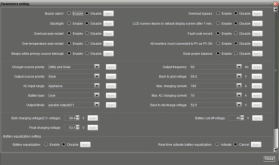KenDan
New Member
In reading that thread, your testing seems to indicate that the discharge curve of LifePO4 cells is so flat, that paralleling them - or any other means of equalizing cell voltages is not very effective. That begs the question - how to you equalize SOC accurately? The standard recommendation is simply to just "top balance". That is much easier said than done however.There are some 1C charge curves on LFP here:

Paralleling LFP cells at rest to "balance" them
Hypothesis: Paralleling cells at rest does almost nothing beneficial. While voltages may be equalized, their states of charge remain dramatically far apart. I decided to do an experiment. Take two CALB 40Ah LFP cells. Fully charge to 3.65V Fully discharge to 2.5V Charge ONE to 3.65V Let them...diysolarforum.com
They hit 3.65 at about 25% SoC.
I've tried to do that on individual cells - manually - by using a resistor to drag the higher voltage cells lower than the others when at a high SOC. This does not seem to work very well for me. Those same cells end up at a higher voltage once again after just one or two discharge/charge cycles.
The mAh that needs to be bled off from those high cells is quite small, but if left unchecked, it can result in those high cells rapidly going dangerously high if the entire battery pack is charged to an Average voltage of 3.65v/cell.
SO, what method works best to achieve an accurate balance in the SOC of all the cells?




